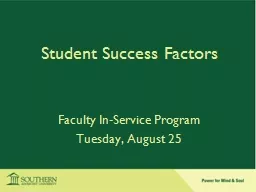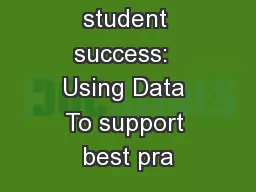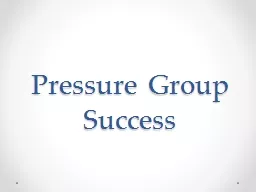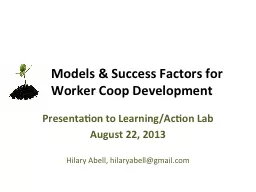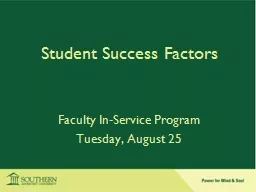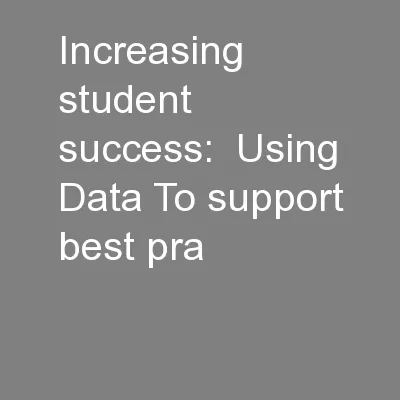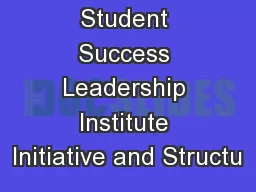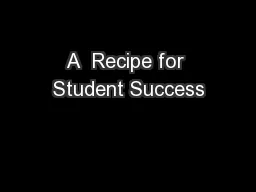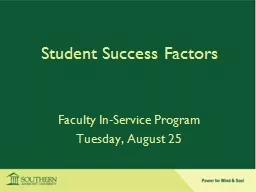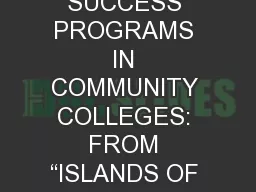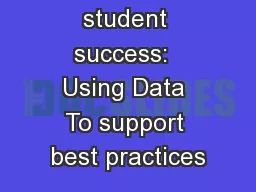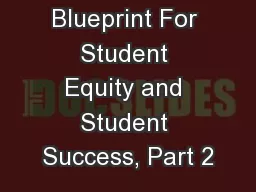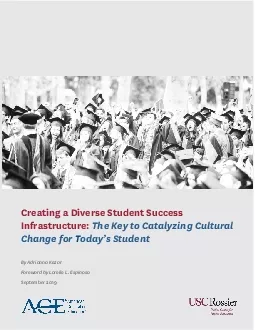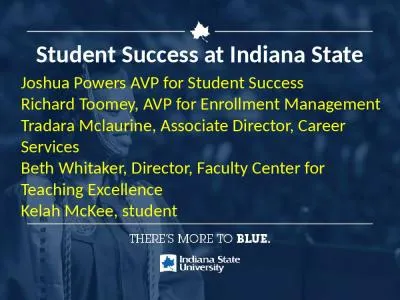PPT-Student Success Factors
Author : marina-yarberry | Published Date : 2017-03-15
Faculty InService Program Tuesday August 25 The Mission Southern Adventist University as a learning community nurtures Christlikeness and encourages the pursuit
Presentation Embed Code
Download Presentation
Download Presentation The PPT/PDF document "Student Success Factors" is the property of its rightful owner. Permission is granted to download and print the materials on this website for personal, non-commercial use only, and to display it on your personal computer provided you do not modify the materials and that you retain all copyright notices contained in the materials. By downloading content from our website, you accept the terms of this agreement.
Student Success Factors: Transcript
Download Rules Of Document
"Student Success Factors"The content belongs to its owner. You may download and print it for personal use, without modification, and keep all copyright notices. By downloading, you agree to these terms.
Related Documents

